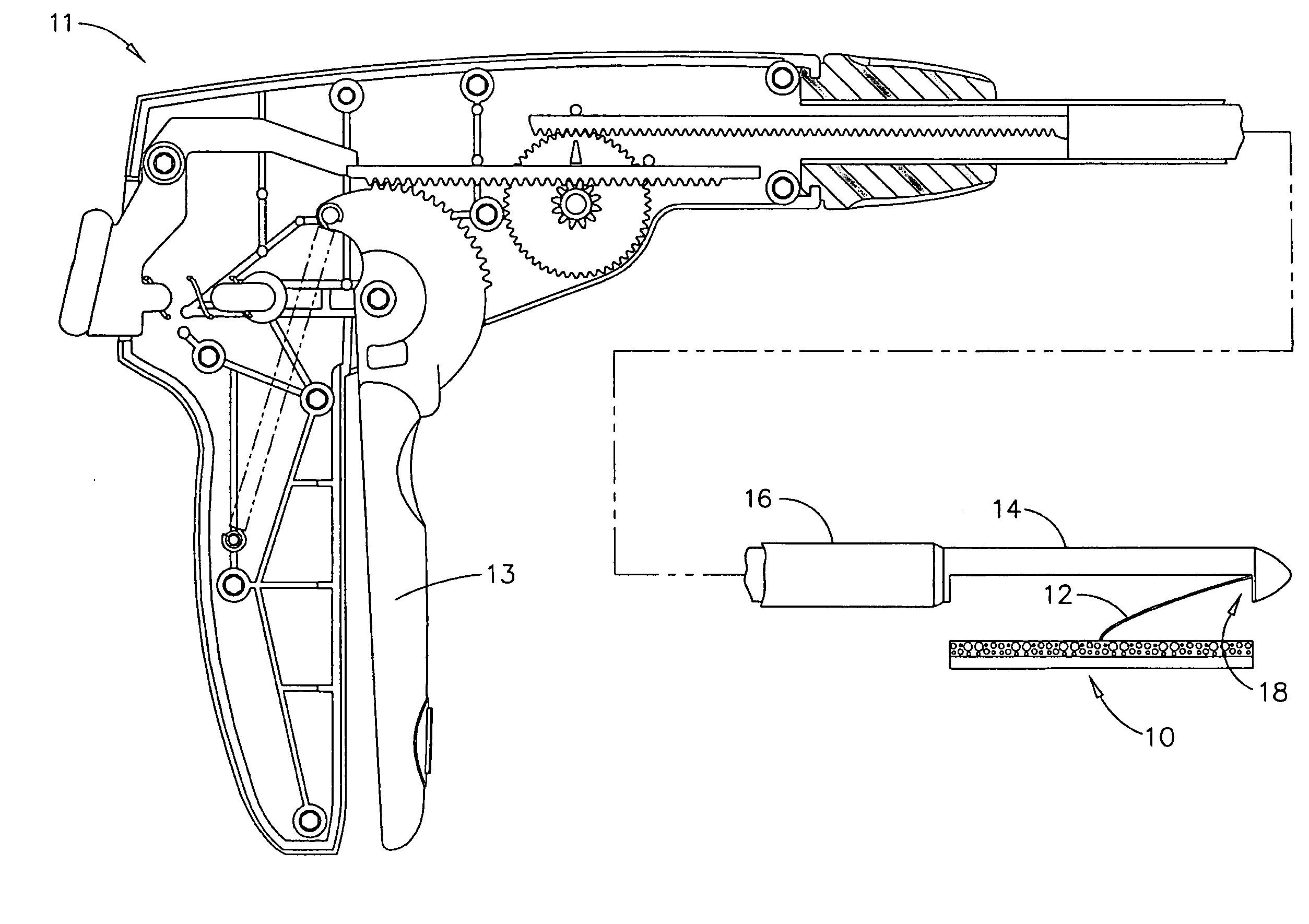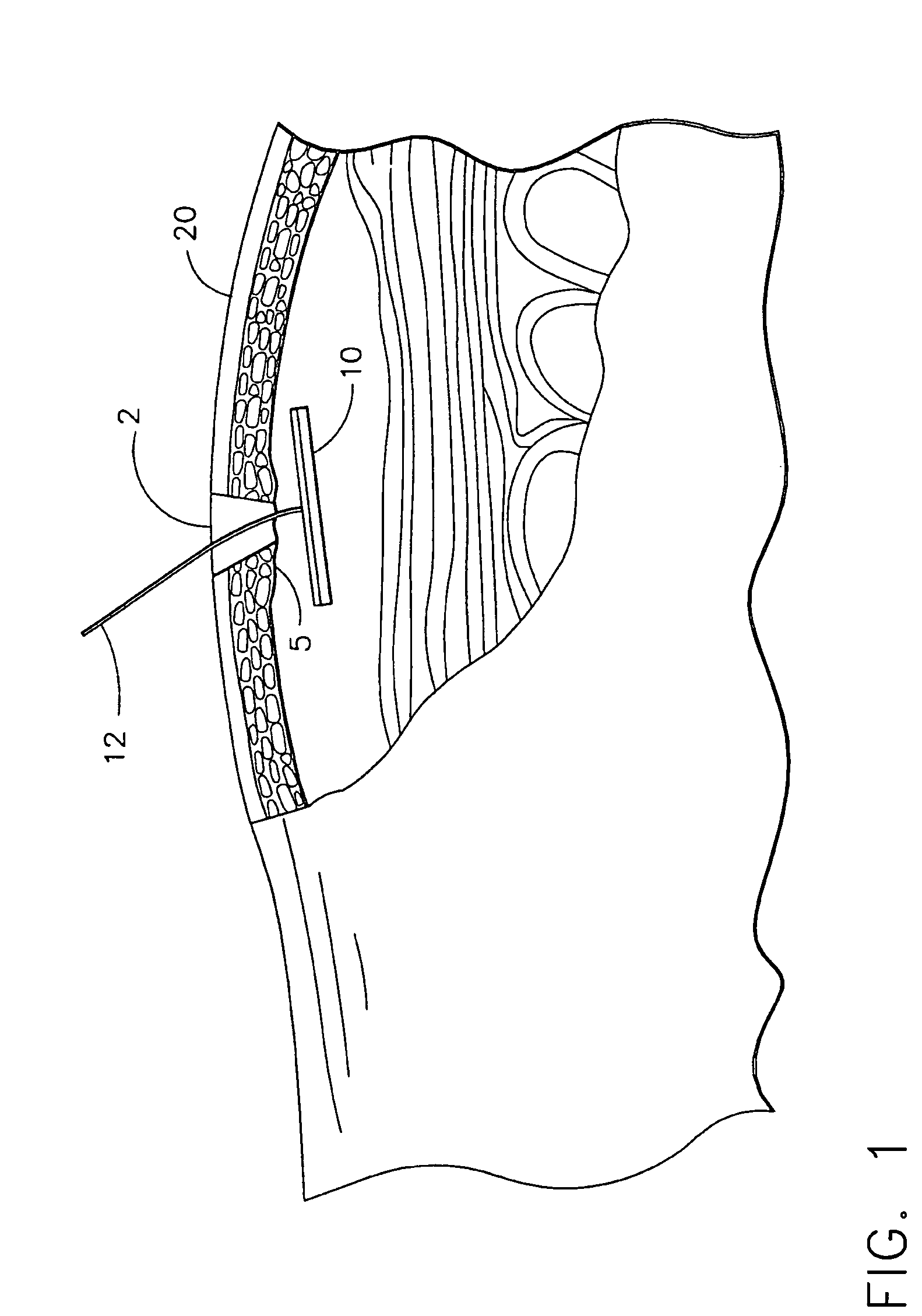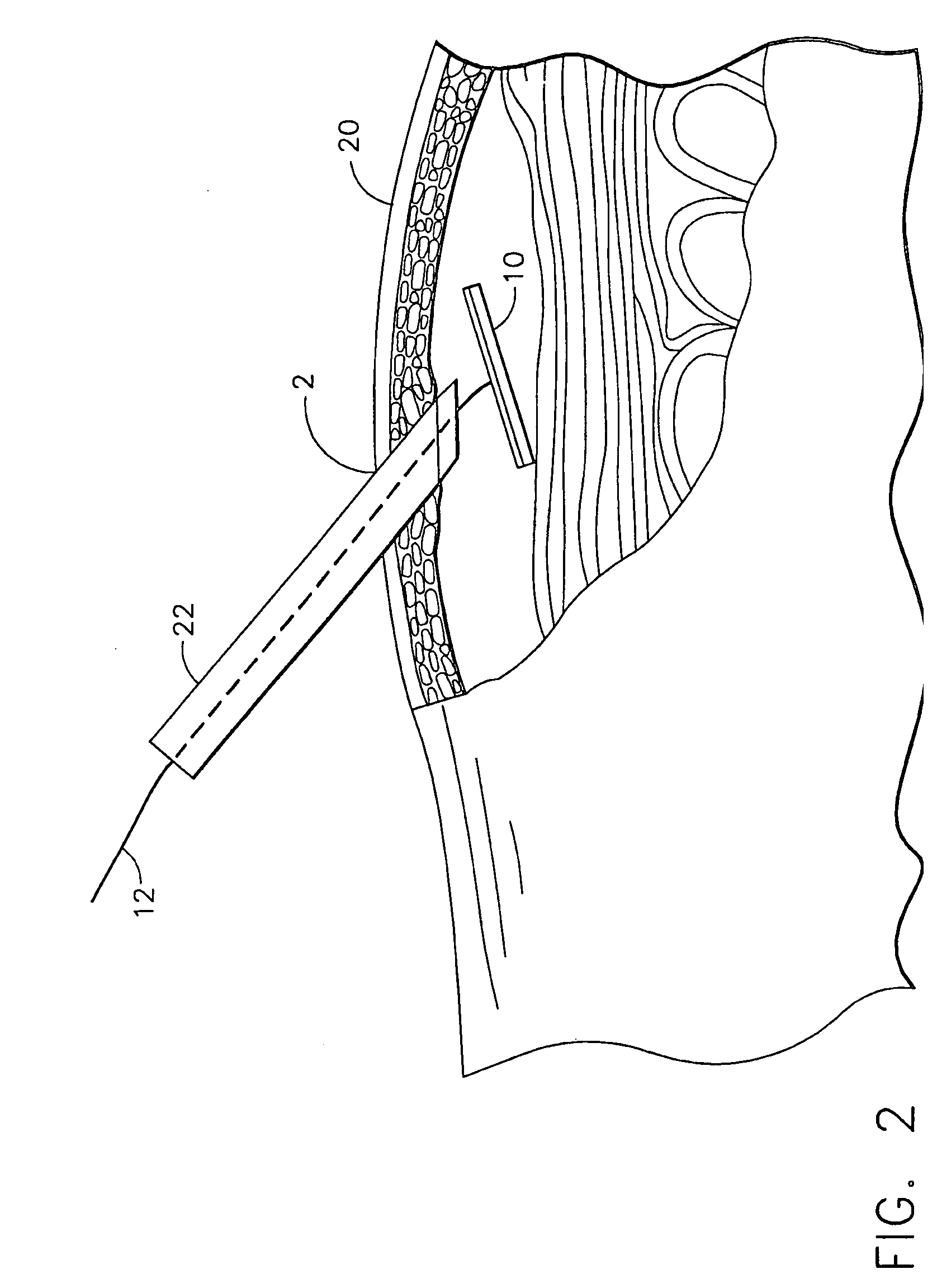[0006] The invention features devices and methods for the delivery of active agents in a subject. The
active agent formulation may be stored within an active agent
delivery system (e.g., contained in a delivery layer of the
system or a reservoir within the controlled active agent
delivery system). The active agent formulation may comprise an amount of active agent sufficient for treatment and is stable at body temperatures (e.g., no unacceptable degradation) for the entire pre-selected
treatment period. The active agent delivery systems may store the active agent formulation safely (e.g., without
dose dumping), provide sufficient protection from bodily processes to prevent unacceptable degradation of the formulation, and release the active agent formulation in a controlled fashion at a therapeutically effective rate to the subject. In use, the active agent
delivery system may be implanted in the subject's body at an
implantation site, and the active agent formulation may be released from the active agent delivery
system to a delivery site within, for example, the peritoneal or
abdominal wall. Once released at the delivery site, the active agent formulation may enter the subject through vascularized tissue.
[0007] The present invention may allow a patient greater flexibility of lifestyle, freedom of movement, and the ability to carry out
physical activity in a more natural and comfortable manner. The present invention may eliminate the need for frequent injections and the pain associated with multiple daily needle injections,
skin irritation, mental anguish suffered by patients having difficulty controlling or maintaining the physiologic parameters pertaining to their clinical condition.
[0008] In one embodiment, the invention comprises an active agent delivery device comprising a tethered delivery device and a minimally invasive method of placing such an active agent delivery device substantially adjacent to vascular tissue. The implantation of such a device may provide a sustained delivery of therapeutic, prophylactic, and / or many other types of materials. Generally, the active agent delivery device may be placed within, for example, the abdominal space, within the omentum, within the
peritoneal cavity, a space formed when the parietal and visceral
layers of the
peritoneum, or between the
parietal peritoneum and
abdominal wall. Other suitable locations for placement are possible.
[0010] The active agent delivery device may include a biological construct and a
tethering means. The delivery device may be substantially flexible and / or have an
adhesive front. The
tethering means may be made of a substantially flexible material capable of anchoring the delivery device in substantial planar contact with the vascularized tissue. The delivery device may be percutaneously inserted near vascular tissue such as, for example, peritoneal tissue. When the delivery device has been inserted, the tethering means may be used to pull the delivery device toward the vascular tissue, such that the active agent delivery top surface of the delivery device comes in contact with the vascular tissue. Contact between the active agent delivery surface of the delivery device and the vascular tissue may be maintained by making and keeping a tethering means substantially taut. In an alternate embodiment, an
adhesive on the active agent delivery surface of the delivery device capable of substantially adhering to the vascular tissue may be used to keep the delivery device substantially in contact with the vascularized tissue.
[0012] The present inventors have discovered a device that is suitable for the controlled and sustained release of an agent effective in obtaining a desired local or systemic physiological or pharmacological effect. The device includes an implantable active agent delivery
system comprising an effective amount of at least one active agent that, once implanted, the device may give a continuous supply of the agent or agents to internal regions of the body without requiring additional invasive penetrations into these regions. Instead, the device may remain in the body and serve as a continuous source of the agent or agents. The device according to the present invention permits prolonged constant release of active agents over a specific period of months (e.g., 1 month, 2 months, 3 months, 6 months) or years (e.g., 1 year, 5 years, 10 years, 20 years) until the agent is substantially used up.
 Login to View More
Login to View More  Login to View More
Login to View More 


